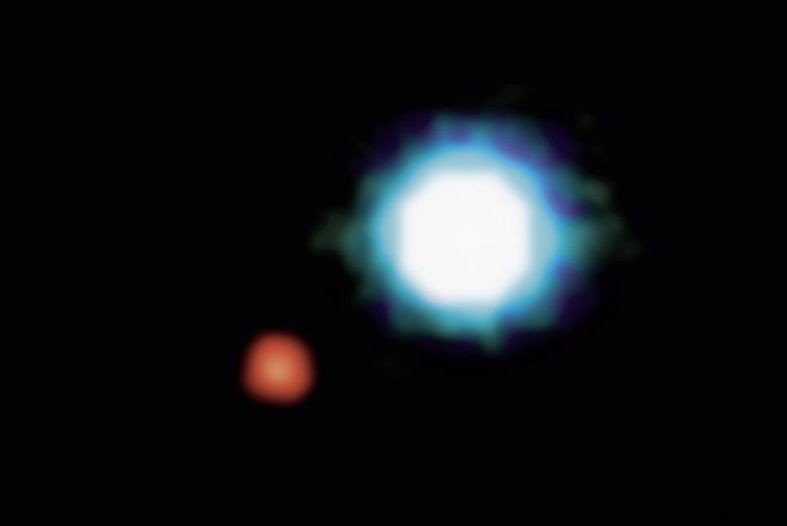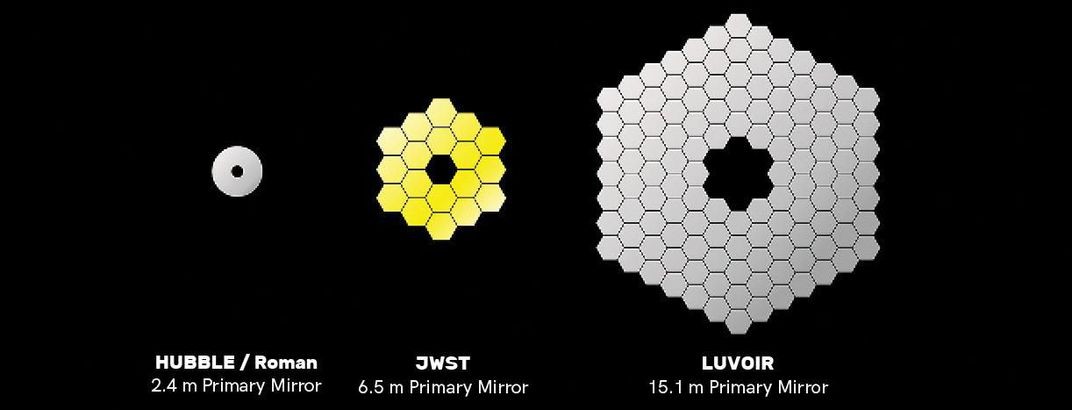Astrophysics of the 2030s will be played out in a few weeks. Of the four missions pre-selected by NASA for future development, one is of particular interest to us. Named LUVOIR, this observatory could change everything.
The more than 4,000 extrasolar planets confirmed so far have been detected indirectly. These methods are sufficient to determine the orbit, the radius, the mass and sometimes the density of an exoplanet, but scientists (and us with them) would now like to understand the chemical composition atmospheres of these objects, or to determine if liquid water may be present on the surface . So much data that can tell us if this or that world is capable of supporting life.
To get this information, we need to observe these planets directly. So far, only a few of them have been imaged by ground-based telescopes, but we need more samples, and better sensitivity. In short, we need space telescopes that do not yet exist.
With this in mind, three years ago, four mission concepts were selected by NASA. All have been subject to the agency's 2020 10-year survey, which will recommend government funding priorities for the 2030s. Early deliberations are expected to take place during the spring.
Among these four proposals are:
One of these four competing proposals could become NASA's next "big observatory" in space. Today, we are interested in LUVOIR – probably the most ambitious.

The main purpose of the observatory will be to supercharge the hunt for small, pale Earth-like planets orbiting Sun-like stars. No world of this size and type has been directly imaged by a telescope to date. To achieve this, we would need to place a huge light collector beyond Earth's darkening atmosphere.
LUVOIR's concept study (a 426-page illustrated report) proposes such a structure, evoking a massive mirror measuring 15.1 meters wide . For comparison, that of Hubble is 2.4 meters wide, and that of the James Webb Telescope 6.5 meters.
Direct imaging of such a dimly lit target will also require a powerful coronagraph. This giant "pair of sunglasses" will aim to block light from host stars with the idea of "bringing out" that from exoplanets.
Inside this coronagraph, an advanced imaging camera will also be needed to detect these small rocky planets. A very sensitive spectrograph will then be responsible for analyzing the composition of their atmosphere.
Like Hubble, LUVOIR will be sensitive in a wide range of wavelengths, from ultraviolet and visible light to near infrared. In this way, he will be able to probe the spectral fingerprints of a wide range of molecules that could betray biological processes at work on the surface.

The LUVOIR study team concludes in its final report that the "luxury version" of its observatory (the researchers propose a "reduced" version with a narrower mirror) could identify and study 54 potentially Earth-like planets over a five-year observation period.
HabEx, the other proposed exoplanet observatory, would also have the ability to directly image small Earth-like planets. On the other hand, its four-meter mirror would detect much less.
In terms of spatial resolution, LUVOIR will be able to return images six times sharper than Hubble . Then imagine images similar to the "pale blue dot" (Pale Blue Dot in English), this photo of Earth taken by Voyager 1 in 1990 at a distance of 3.7 billion kilometers, but with planets 100,000 times further away .
These worlds will only cover a few pixels, but the color of those precious pixels could tell us a surprising amount of information.

The idea of a very large space telescope capable of seeing through many wavelengths has been discussed for almost two decades at NASA. Until now, however, the technologies needed to bend such a large segmented mirror and to build a high-performance coronagraph were lacking. But we have evolved.
The Webb telescope, which is due to take off this fall, will indeed be the first to offer a segmented mirror, while the Roman telescope (planned for launch in 2025) will pilot the first advanced coronagraph in the space. These two projects will thus give LUVOIR a technical head start.
Naturally, given its ambitions, the observatory will also be very expensive. For the "all options" version, count18 to 24 billion dollars (construction + monitoring). For the "reduced" version (eight-meter mirror), count12 to 18 billion dollars .